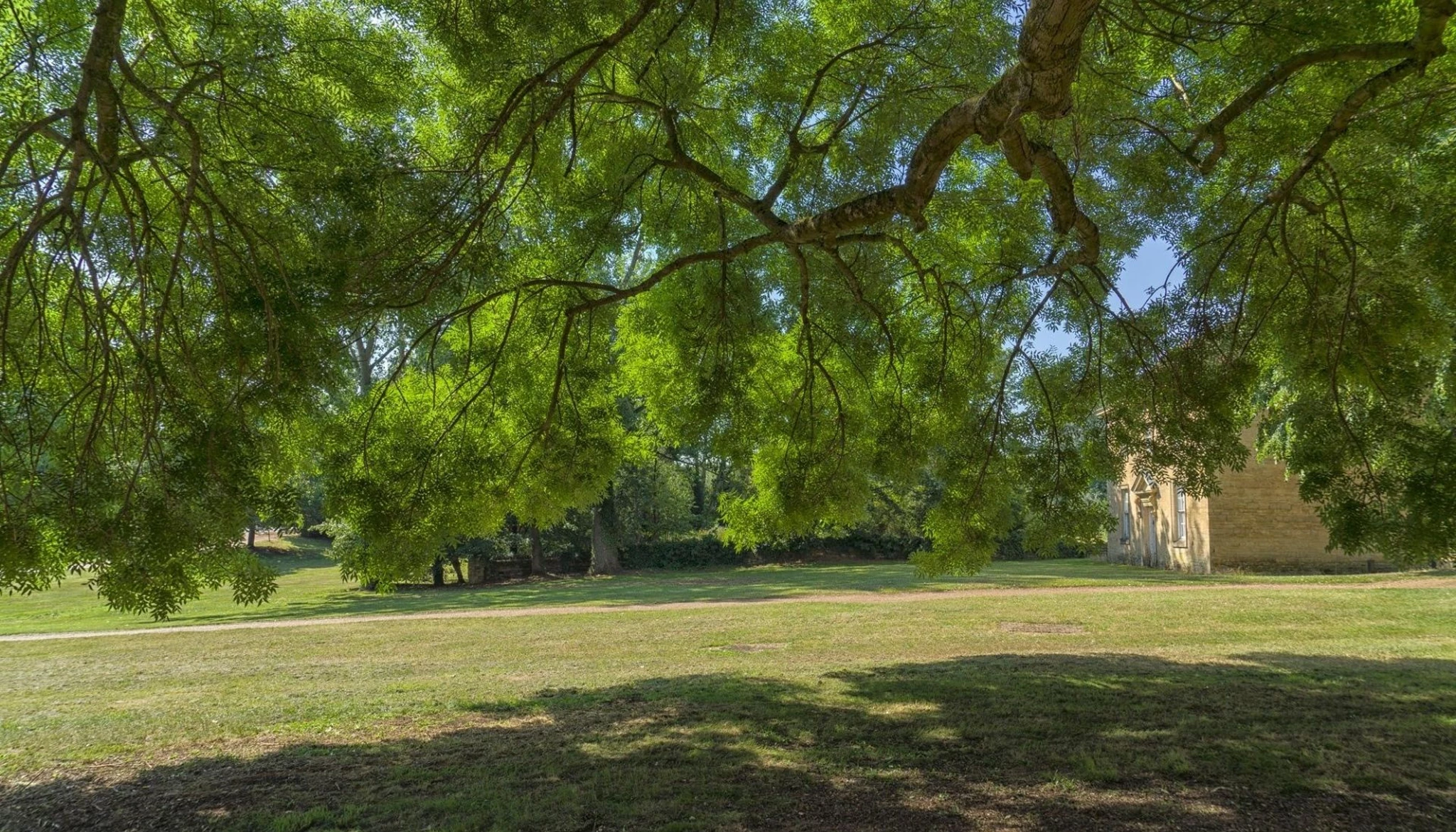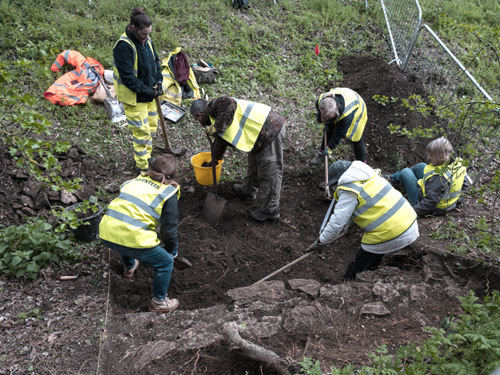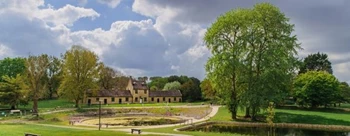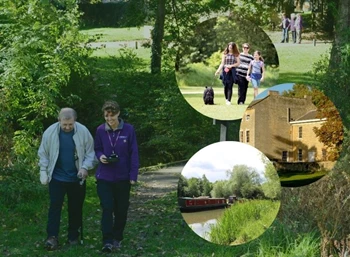18thC Landscape Great Linford

Thanks to funding from the National Lottery Heritage Fund we have discovered that Great Linford Manor Park was once home to an 18th century English Pleasure Garden. Although we don’t know exactly what this garden would have looked like, some clues have been left behind which give us an idea of how different features were laid out.
The Doric Seat, early 18th century
Hidden deep inside the wilderness area in the northwest of the park, a feature like this was popular in 18th century gardens. In the days before the canal and railway, an open lawn would have led down from the Doric Seat to the River Great Ouse below. We think that there may have been a matching Doric Seat at the neighbouring Little Linford Hall which once stood on the other side of the River Ouse. Catherine Uthwatt of Great Linford Manor married Matthew Knapp of Little Linford Hall in the mid-18th century. The story goes that the two Doric seats were for Catherine and her mother to gaze at one another across the valley.
Our Doric Seat survived until the 1980s when it was vandalised and destroyed by a fire. For a time in the 1960s it was home to some cows! In 2019 it was excavated by a team from Cotswold Archaeology. As part of our National Lottery Funded project, we are restoring part of the Doric seat and providing interpretation on site.
Do you have memories of the Doric Seat? If so, we'd love to hear them! Email us on glmp@theparkstrust.com to tell us your stories.
The Doric seat in the 1960s (via Bucks Archives).
The Wilderness, late 18th century
The Doric Seat is found in the wilderness area of the park. A natural area such as this, thick with trees was popular in 18th century gardens and is even referenced in Jane Austen’s Pride and Prejudice when Lady Catherine de Bourgh visits Elizabeth Bennet at Longbourn:
"Miss Bennet, there seemed to be a prettyish kind of a little wilderness on one side of your lawn. I should be glad to take a turn in it, if you will favor me with your company."
Taking a turn around the Wilderness was a common pastime for friends, families and courting lovers. We are bringing it back to life by reinstating its meandering paths as part of our National Lottery project.
The Haha
Named after the surprised expression of those stumbling upon it, the Haha is a hidden wall sunken into a ditch that was designed to keep out sheep and cattle from the gardens closest to a house, whilst providing unspoiled views from the house out over the parkland. For many years the Haha at Great Linford was hidden beneath thick foliage and was noticeable only as a slight dip in the ground running from the manor to the canal and the high street in either direction. In 2019 Cotswold Archaeology excavated the Haha at the edge of the Wilderness, next to the canal and revealed the stone wall nestled inside the ditch.

Excavation of the haha in 2019 (photograph by Hugh Robinson).
Cascading ponds
No 18th century garden would be complete without a water feature. We think that once upon a time there were 4 ponds in the park, which had probably been converted from a medieval stream or fishponds. They were, and still are, fed from the natural Hine Spring outside the Almshouses, and water cascaded between them and down into the Ouse Valley beyond. In 1800 the Grand Union Canal was dug through the park, possibly destroying one pond and isolating another on the other side of the canal. Over time the ponds have become full of debris and water no longer flows between them. As part of our project we are restoring the ponds so that water can cascade down them again.
And what about Richard Woods?
Our research has hinted that prolific 18th century landscape designer Richard Woods may be connected to the park. We know that he drew landscaping plans for the Little Linford estate, but we don't know how much of them were implemented. His design of the Little Linford estate is very similar to the existing features we see at Great Linford so perhaps Woods made designs for Great Linford too.
The Uthwatt Family and their garden
Sadly, very little information survives about the Uthwatt family and the development of their garden. We know that Henry Uthwatt (manor resident 1754-57) made payment to Henry and Samuel Hewitt, gardeners in Middlesex, of £25-9-4 (about £3000 today). The Hewitts ran a nursery and seed business supplying bulbs, shrubs and ornamental trees. However, this is the only record linking Henry Uthwatt to the development of the pleasure garden.
Henry’s widow Frances lived at the manor from 1757-1800. This would have been the time when the 18th century garden features at Great Linford were created. Interestingly, Frances grew up at Chicheley Hall in Northamptonshire which has curiously similar features to Great Linford: a wilderness, 18th century pavilion and a ‘descending line of four rectangular ponds’. However, it is unlikely that a single woman at that time would have commissioned substantial garden works, even if she was wealthy. Nevertheless, Henry had made Sir Roger Newdigate trustee of the estate to look after Frances. He was a wealthy landowner who had notable gardens at his own estates. Therefore, it is possible that the gardens at Great Linford were designed under Newdigate’s control with Frances’ wealth.
By the late 18th century fashions had evolved, and informal, loosely planted styles referred to as English Landscape Style became popular. This was most likely the time when more natural features like the wilderness were added.








